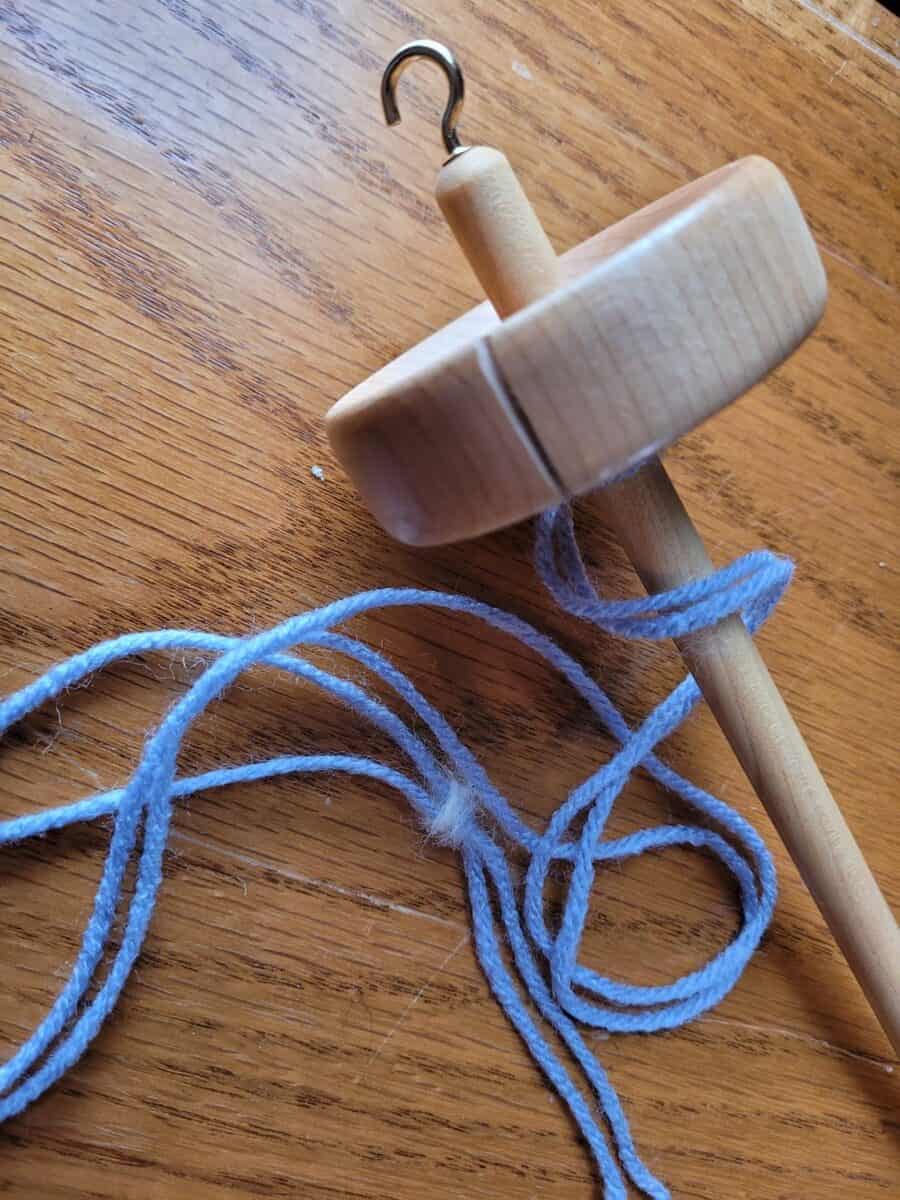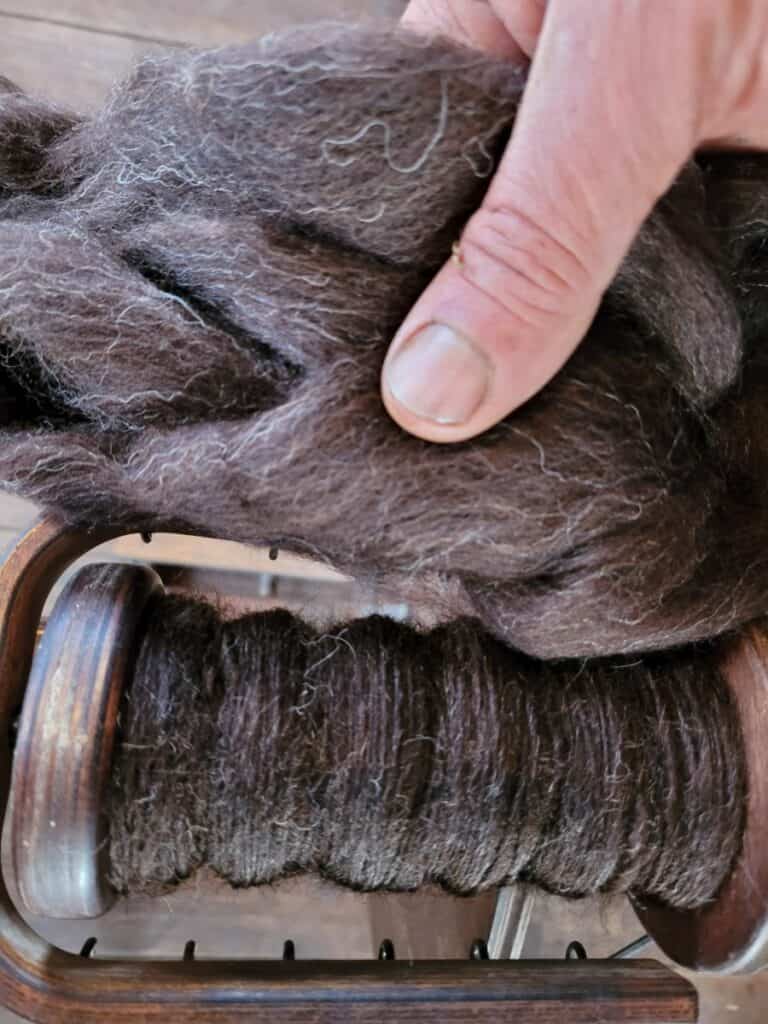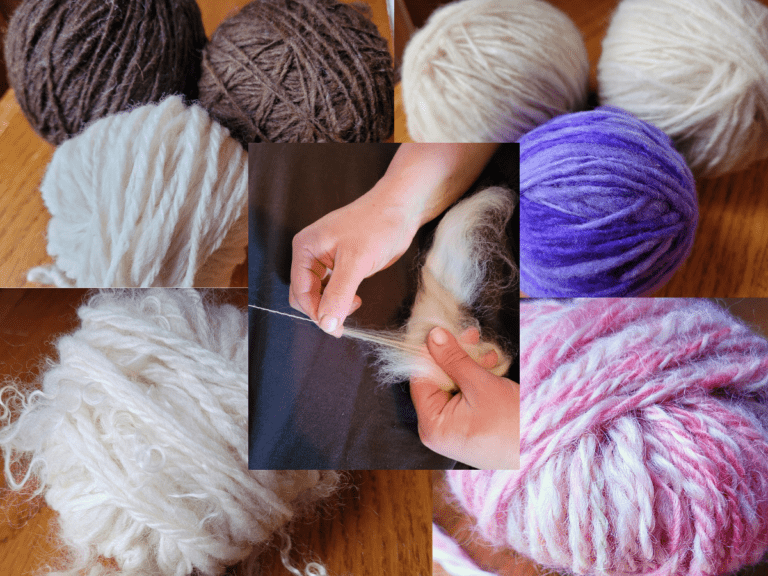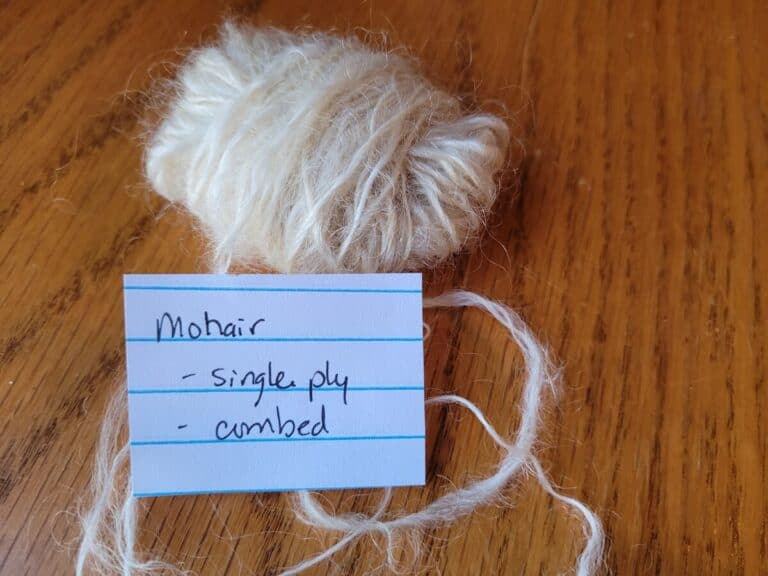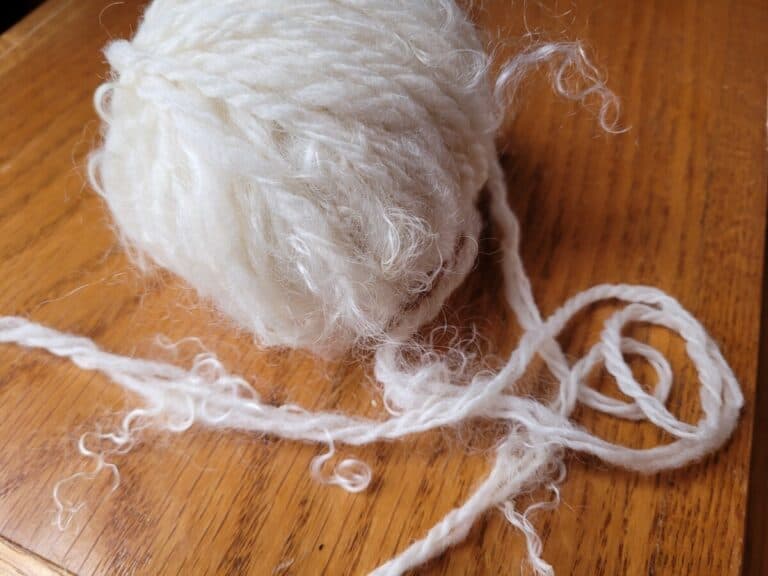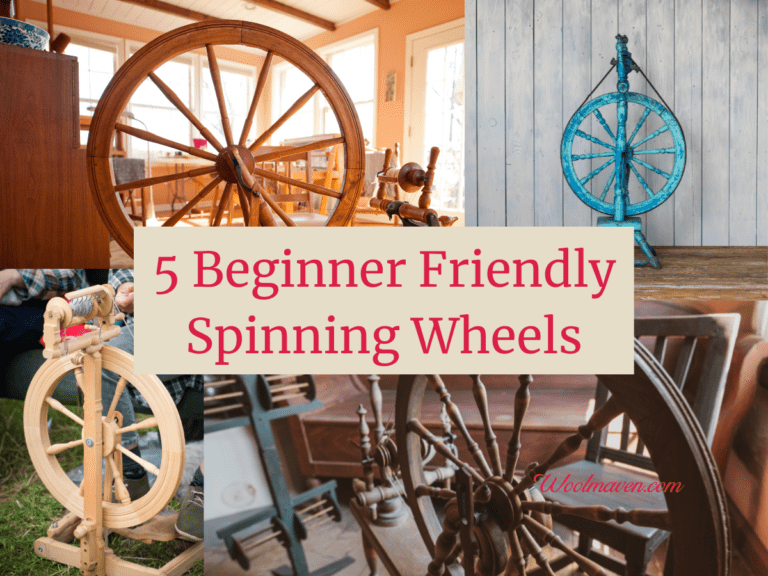How Do You Spin Wool Without A Spinning Wheel?
Since yarn is really just twisted wool or other spinnable fibers and that seems fairly easy to do, what if you could spin wool into yarn without using a spinning wheel?
It’s doable and actually pretty common, fiber enthusiasts the world over have been spinning yarn without wheels for ages!
To spin yarn without a wheel you can use a drop or supported spindle to make your yarn. Another option is to use unspun yarn, also called pencil roving, for your fiber crafting or to use an alternative material as a yarn substitute for your project.
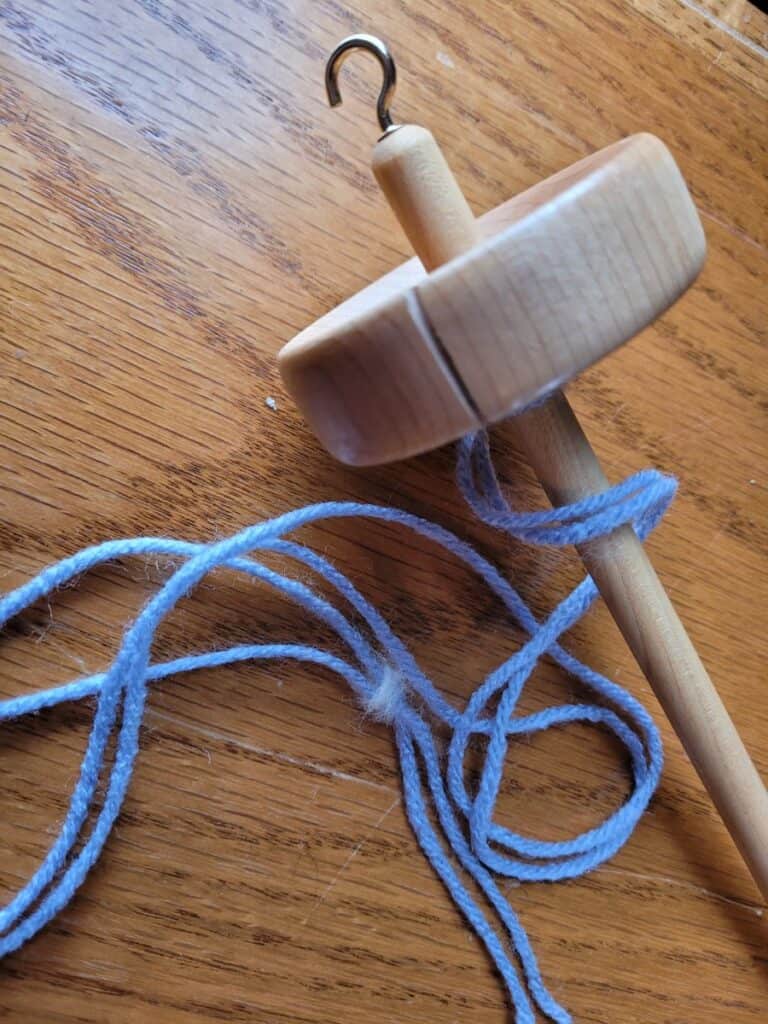
What Is The Minimum Equipment Needed To Spin Wool? goes over the things you need to get started spinning and gets into using a spindle a bit more.
New to spinning and want some help? Try my Beginning Spinner Course, it has simple, step by step instructions and is designed to take you from beginner to confident spinner!
Spin yarn with a spindle
The most popular way to spin yarn without a wheel is to use a spindle.
Spindles come in a variety of sizes and materials but all work based off of putting twist in the spinnable fiber and having a place to wind on the yarn as it is spun.
Spindles seem to vary with the area, some folks use drop spindles (the kind I have) and some folks use a supported spindle that is usually bigger and is used with a bowl.
Spindles can be used to spin most any fiber that you would want to use a wheel for and, depending upon the spindle, you can also spin worsted or woolen style.
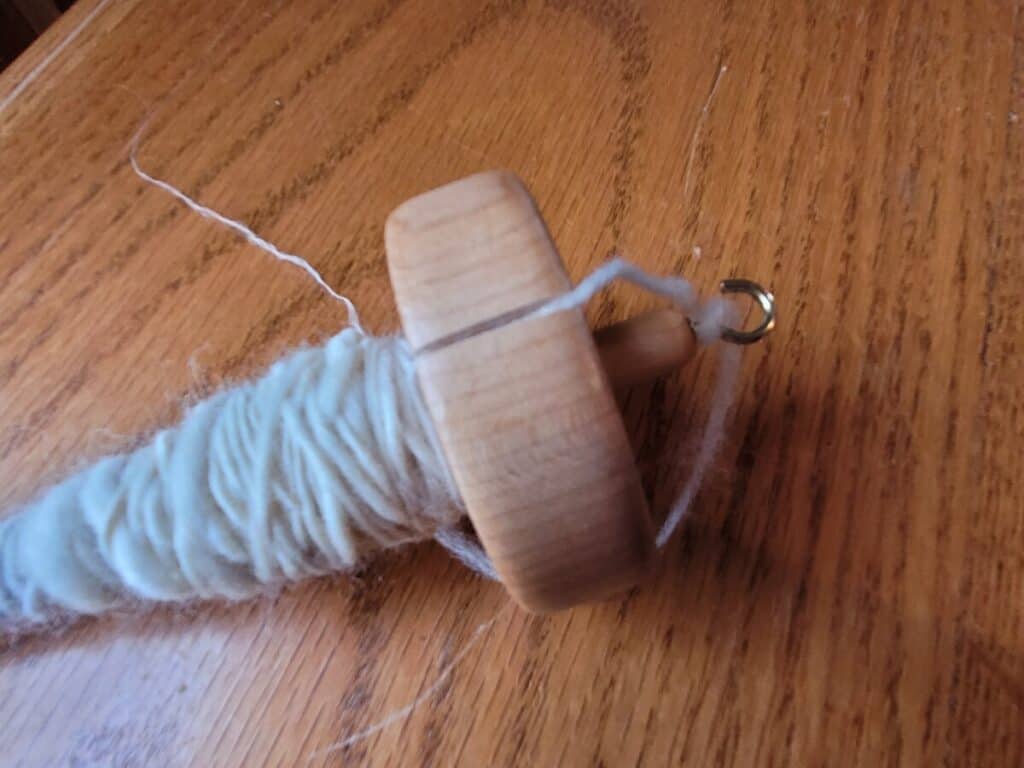
This post contains affiliate links, which means I receive commissions if you choose to purchase through links I provide (at no extra cost to you).
Drop spindles are smaller
Drop spindles are the spindles that you are the most likely to come across when you start looking around for information about spindles.
They are smaller spindles with a disc on one end, fairly easy to learn to use and less expensive to buy, some even are pretty cheap.
Not to mention the many articles that tell you how to make one from a few of the items, like scratched or unplayable CD’s, you might have sitting around your house.
My spindle is the basic beginner spindle from The Woolery that cost $11. There were other choices and some much more ornate, but I just wanted to get a basic one to start with.
Blue Faced Leicester has luster and a bit more slip, making it particularly good to use on a spindle.
Where Do You Get Handspinning Supplies? (5 sources for every area) gives you some ideas on where to buy the things you need to get started, even if you are not using a wheel!
Supported spindles use a bowl
The other type of spindle you may have seen is a supported spindle. They come in a variety of sizes and have some shape differences, but are all used on a table or the floor with a bowl.
Some of the supported spindles are pretty large and would be used to make thicker yarns, others are smaller, more along the drop spindle size and would be used for making thinner yarns.
The beauty of a supported spindle is that it does not have the weight of the spindle pulling the yarn flat, meaning you can get a lighter, woolen style yarn with these type of spindles.
Supported Spindles Spinning Tips is a quick overview of working with a supported spindle on SpinOffmagazine.com.
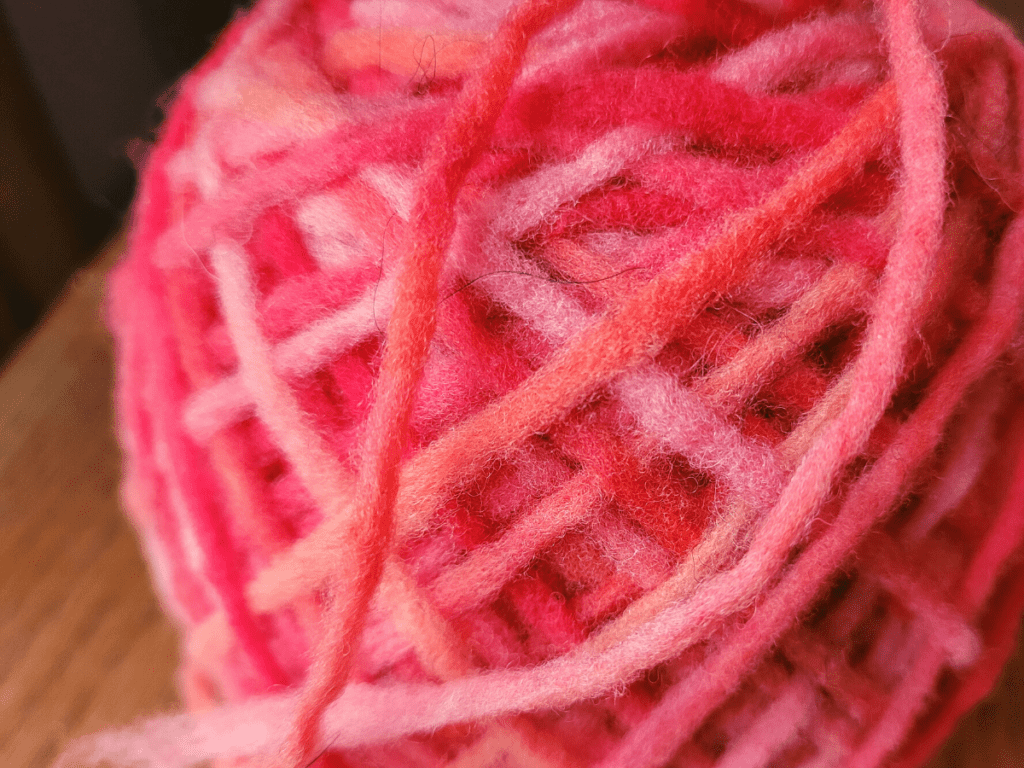
Use unspun yarn for your project
If you just want to use something like yarn, but do not need it to actually be spun, you just need it to hold together, you could use unspun yarn for your project.
Unspun yarn (also called pencil roving) looks like yarn, at least when you first look at it.
Unspun yarn is a bigger diameter single, more like a worsted weight yarn, that is very lightly twisted, just to help it keep shape and then wound into balls or cakes.
This is what you’ll get if you buy pencil roving or some of the Lopi yarns.
These unspun yarns look like a worsted single and can be used as is for knitting or crochet, as long as you can go carefully to not pull apart the “yarn”, which is basically a long thin roving.
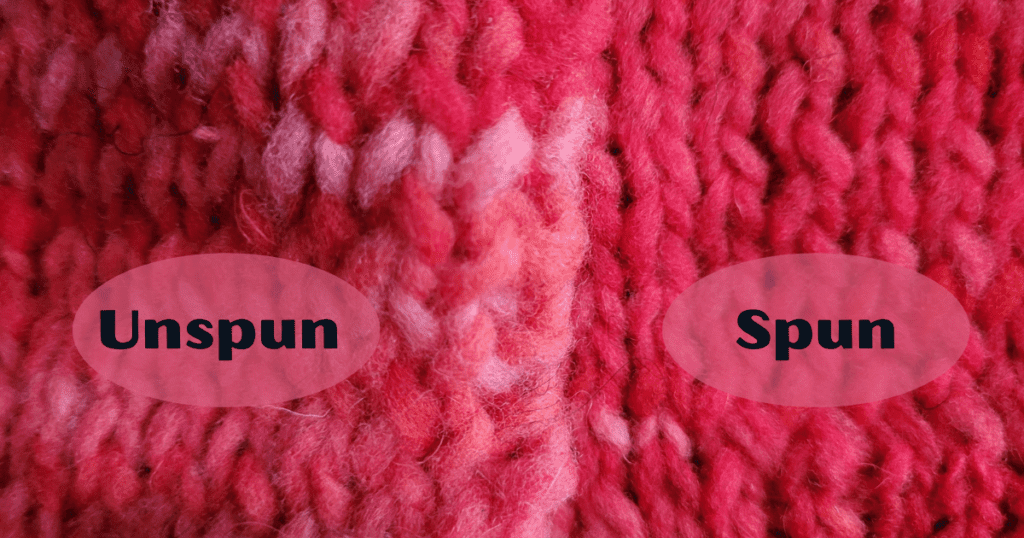
My experience with unspun yarn (pencil roving)
I purchased some pencil roving just to see what it would look like and how it would work for me.
It was a Merino and Rambioullet pencil roving that was easy to run through the wheel to add twist, meaning you could also put it on the spindle to add twist and it was fine to knit with, as is.
My initial plan was to add the twist to the pencil roving and use it for some of my knitting, as an experiment.
I found that using the pencil roving unspun worked just as well and the results were nearly the same.
You could see a slight difference in the spun pencil roving, but to tell you the truth, not enough to make it worth using the wheel.
If I were going to do much with pencil roving, I’d just use it as is, adding the twist just didn’t seem to matter much.
The Lopi type of pencil roving or unspun yarn I think would hold together more easily than the shorter stranded wool roving that I used, making it even easier to use unspun!
There is also unspun yarn from other sources, sold as a larger diameter roving, which could be used for arm knitting or mega sized knitting or crochet!
Use a yarn alternative for your project
Another option you have is to make yarn from other sources of materials, by this I mean cut up fabrics that will not unravel and use them as a source of your yarn.
As long as you can manipulate the alternative material in a yarn like way, give it a shot. This is where using leftover twine, cutting up old sweatshirts or even using plastic bags will work.
Small: three ways to make yarn without a spindle or wheel on SheepCabana.com, giving you some “find it around your house right now” type tips for non spun yarn.
The catch here will be getting enough of the material to make a decent sized project, but that can be done once you work with a small amount and see how you like the idea.
If you are looking for more of an overview on spinning without a wheel, here’s an article to get you started:
The Art of Handspinning is a classic article in Mother Earth News going over many old or traditional ways of handspinning without a wheel, including using sticks and clay beads.
New to spinning and want some help? Try my Beginning Spinner Course, it has simple, step by step instructions and is designed to take you from beginner to confident spinner!

